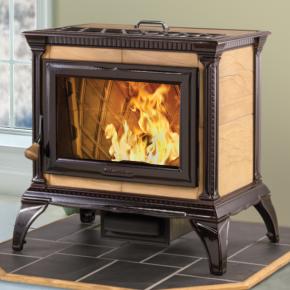 Many Americans are bracing for high heating bills this year, but the frosty New England winter won't put a chill on the Fey family’s energy budget. The Feys are one of many families reducing their costly household oil dependence by turning to a wood, a more traditional fuel with newfound popularity.
Many Americans are bracing for high heating bills this year, but the frosty New England winter won't put a chill on the Fey family’s energy budget. The Feys are one of many families reducing their costly household oil dependence by turning to a wood, a more traditional fuel with newfound popularity.
The Feys first used a wood stove to supplement heat in their home, then migrated to a wood pellet stove and have never looked back. "I was hooked immediately: no more wood piles, or chopping wood; no more wood debris scattered on the floor," Kathleen said. "And it made sense to use the leftovers from wood use and production. We were feeling very green about our decision."
The pellets burn better than firewood, too. "Pellets are much cleaner in terms of emissions," said John Ackerly of the Alliance for Green Heat. "They are a low-moisture, consistent, dense wood product.”
But perhaps the best green advantage for the Feys is the amount of money they save on heating bills for their 250-year-old hipped roof colonial.
They use less than one 275-gallon tank of oil per year. At the going rate of $3.75 a gallon, the family might spend just $725 this year on oil.
Wood Heating Is Catching Fire
More than 20% of New England households that use heating oil also use wood (or wood pellets) as a source of heat. That number is about twice the national rate. New England happens to be the region of the United States that is most dependent on heating oil, which is now by far the most expensive home heating option.
With the average U.S. household that uses heating oil expected to spend more than $2000 on fuel this winter, it's no wonder New Englanders are turning to wood.
For more information on pellet stoves, pellet stove inserts, wood stoves, and wood burning fireplace inserts contact West Sport.
National Geographic

Comments
{tag_commentlist}